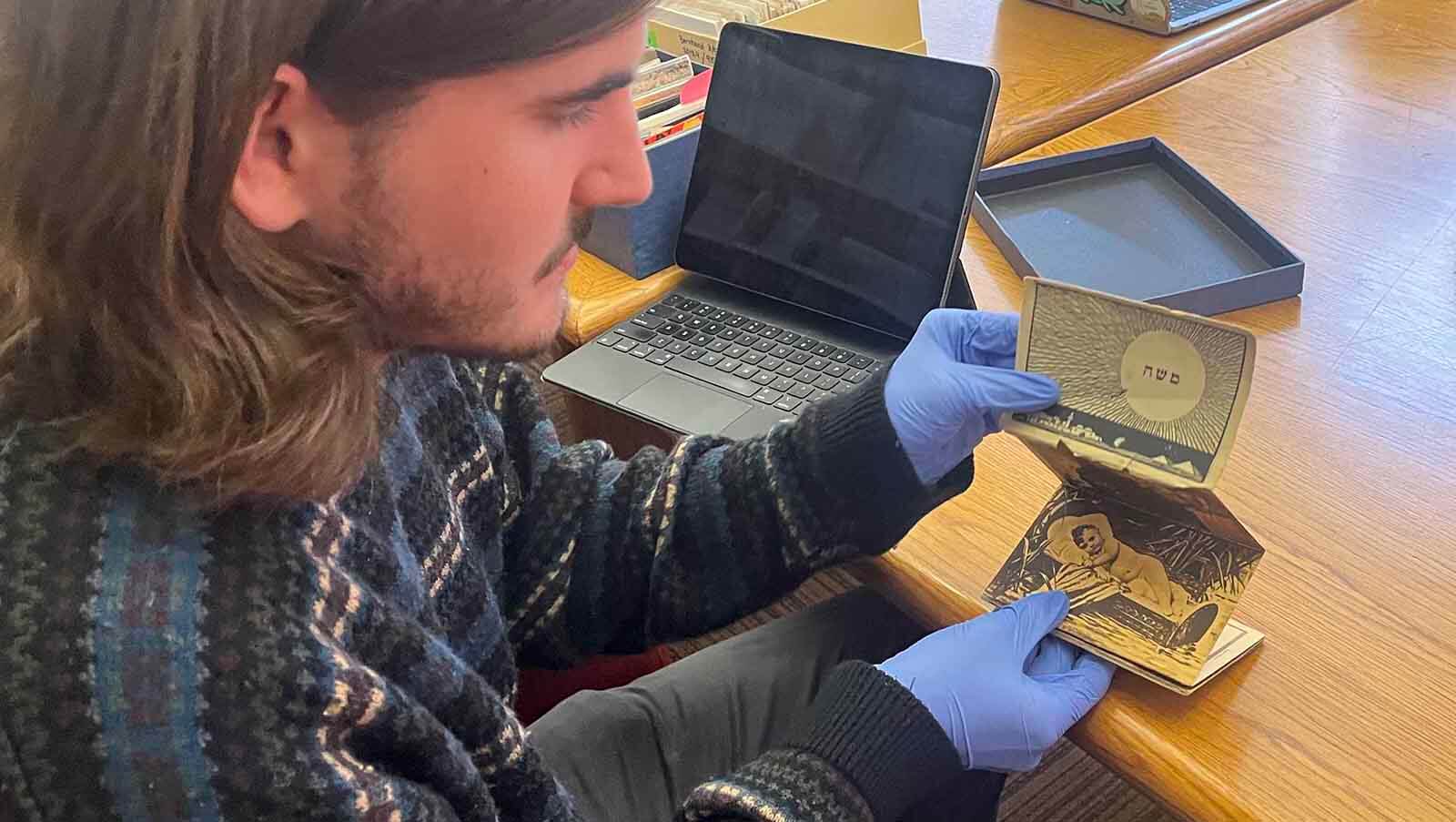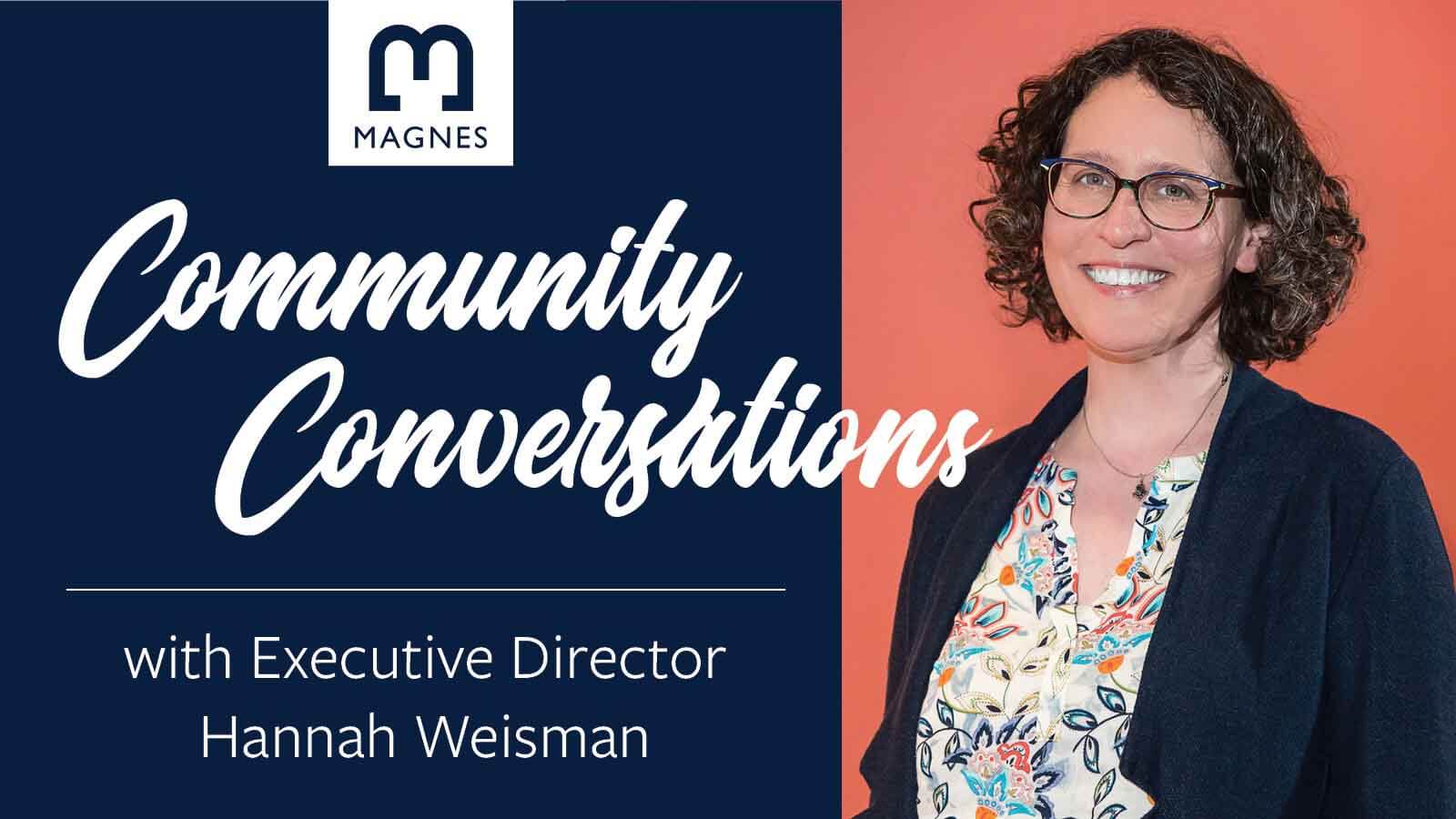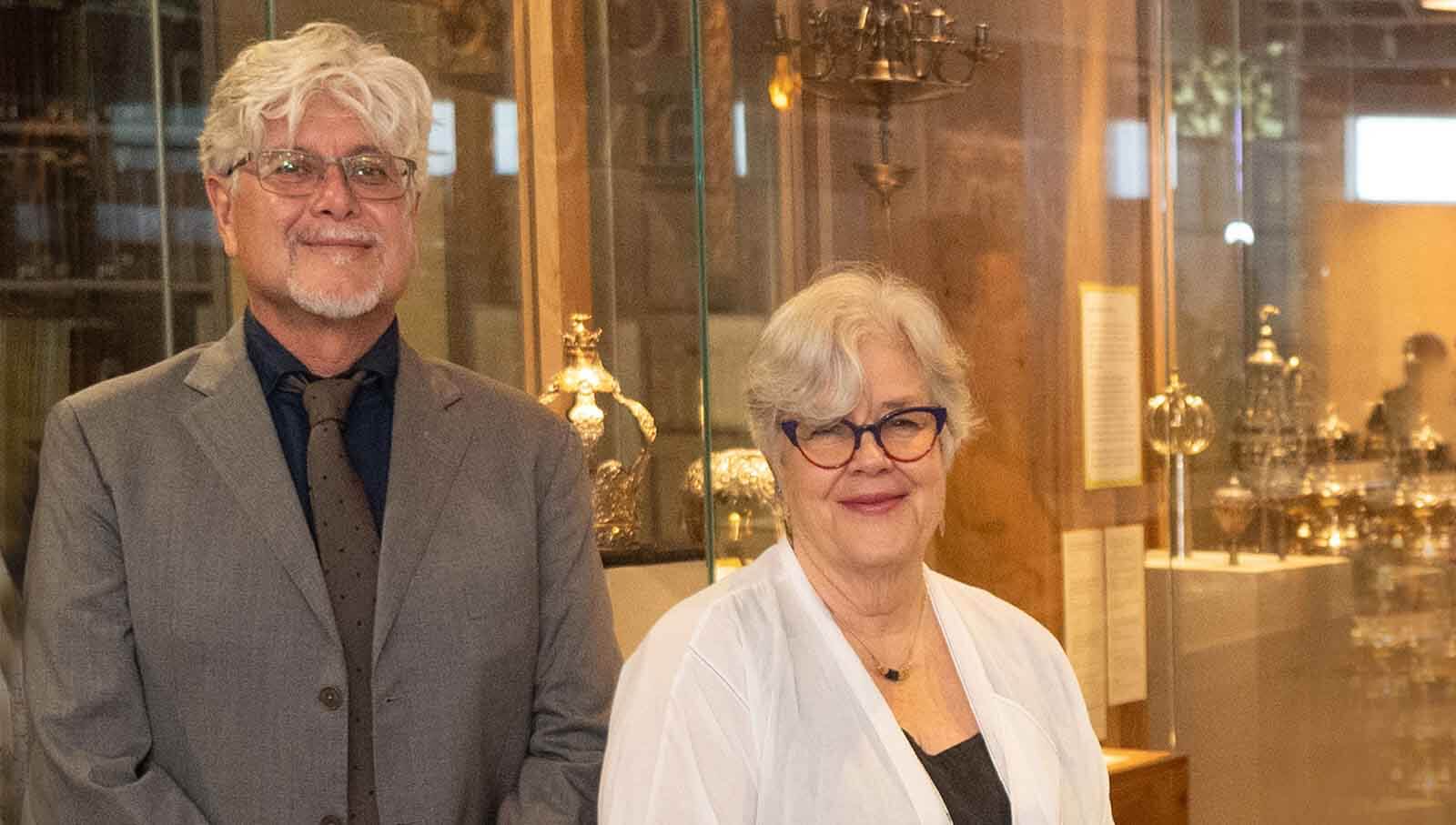News
Q&A with Student Research Apprentice Derick Lietzow
April 10, 2024
The Magnes partners with UC Berkeley’s Undergraduate Research Apprenticeship Program (URAP) to provide opportunities for Cal students to work with faculty on our world-renowned research and curatorial projects. As a Junior majoring in history, Derick Lietzow has worked with Magnes Curator Francesco Spagnolo since the fall of 2023, deepening his knowledge and skills in areas of special interest, while experiencing what it means to be a part of an intellectual community engaged in research.
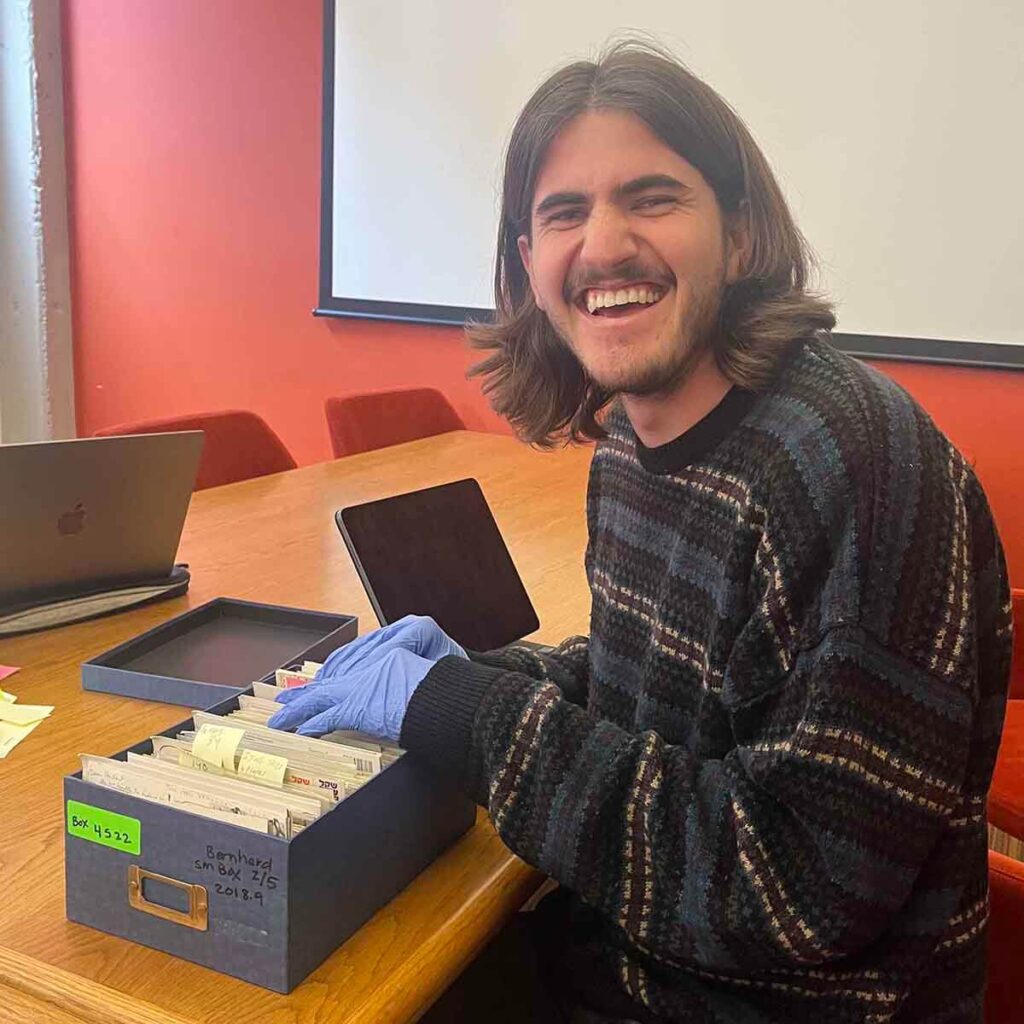
Derick Lietzow
History Major
Class of 2025
Why did you decide to apply for the URAP research position at the Magnes?
As a History major, I knew that I wanted to get more involved in interacting with primary sources firsthand. While I was searching for a program which might allow me to do this, my roommate, who had been working at the Magnes, suggested that I apply to the Undergraduate Research Apprentice Program there. My roommate’s suggestion was confirmed after Professor Spagnolo—who is now my URAP mentor at the Magnes—gave a very interesting guest lecture on “Music in Israel” in one of my History classes.
I was also drawn to the Magnes because of my interest in religious history and my own family history. The objects I interact with are mostly from the last century, so I enjoy imagining how my own family members may have fit into the world preserved by the objects in the Magnes Collection.
As a URAP student, what projects are you working on at the Magnes?
Over the past two semesters, I have been working with other students on the Postcards Project to inventory the thousands of postcards within the Magnes’s collection. So far, we have inventoried almost 2,400 postcards from throughout the Jewish diaspora, and there are still many more for us to go through. We have compiled quite a lot of data and have begun discussing ways to display this data so that it might be better understood as a part of the Magnes Collection as a whole.
How does your URAP work at the Magnes align with your major/field of study?
In my History classes, we usually only interact with sources on a textual basis, and often through digital copies which do not really capture how an object or source would have been interacted with on a physical level. Through my work at the Magnes, I have had this way of interacting with sources challenged. The postcards I work with are much more than simply textual sources. They are intimate and personal objects—covered in layers of postage stamps, post marks, and quickly scribbled notes or doodles. The importance of not only the words written on the object, but also its history of physical use, have to be considered. In this way, I feel that my work at the Magnes has opened my mind to different ways a historical source or object may be interacted with and understood.
“I enjoy imagining how my own family members may have fit into the world preserved by the objects in the Magnes Collection.”
— Derick Lietzow, URAP Student
What skills have you developed during your time as a research apprentice?
One of the many skills I have developed is my ability to safely handle the objects in the collection. I can sometimes be a clumsy person, so when I started at the Magnes, I was very intimidated by the idea that I might somehow irreparably damage an object through an act of carelessness. Perhaps because of this fear, I have made sure to pay close attention to detail while working with the postcards in the collection so as to prevent potential harm. This attention to detail has carried over into the inventory work that I do as well. Transcribing handwritten notes—sometimes in languages I do not know—requires patience and close attention so as to get the most accurate information possible.
What are you enjoying most about working at the Magnes?
I really enjoy getting to work with other students with similar interests in the Humanities and Social Sciences. Each one of us brings a different perspective to the postcard project, and it is really cool to hear everyone’s different interpretations of the postcards and other objects we interact with.
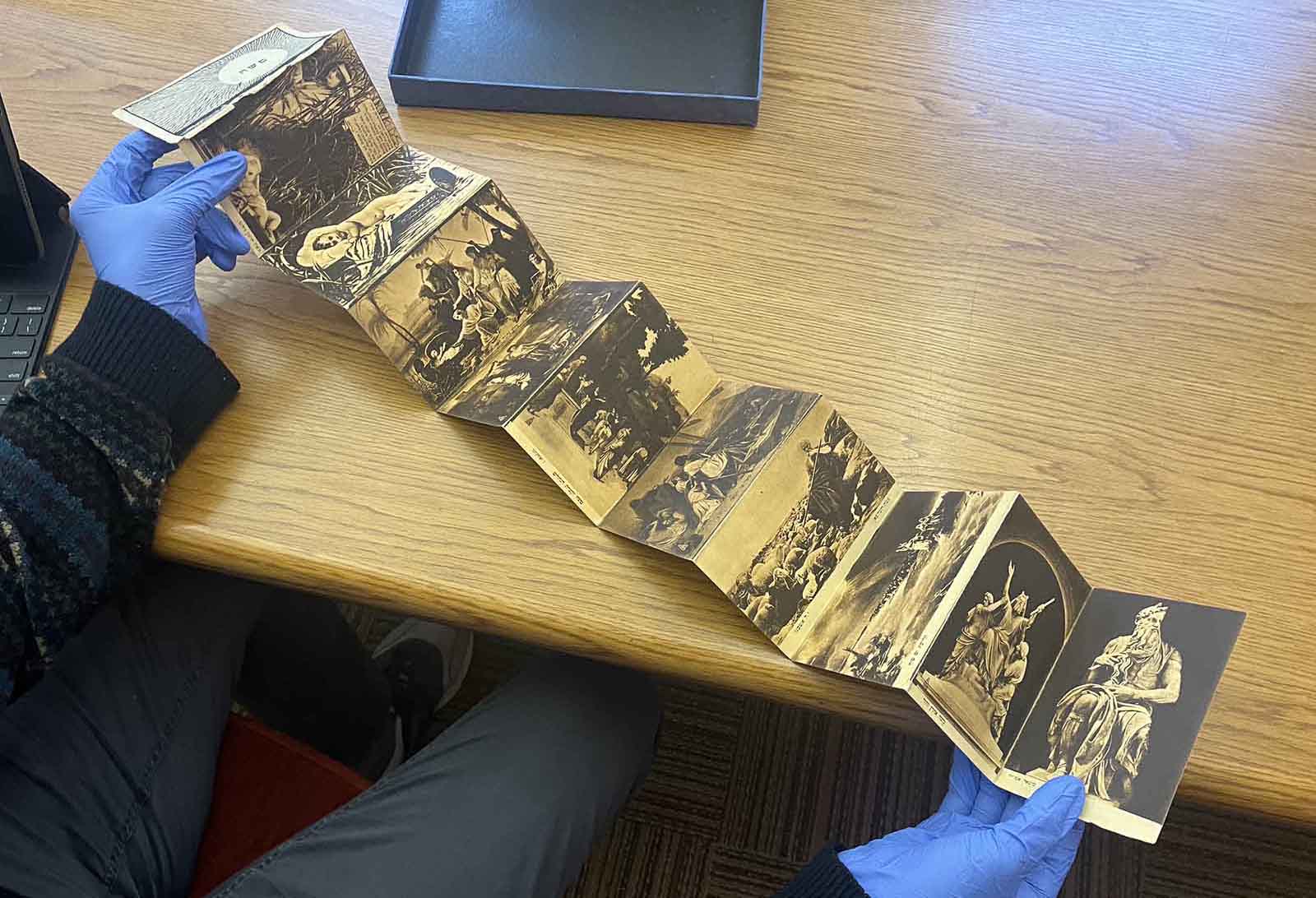
Do you have a favorite object at the Magnes?
Just recently, I was able to handle a booklet of postcards from early 20th century Germany which depicted various scenes from the life of Moses. Each of these scenes were very beautiful, but what makes this object my favorite was how fragile it felt in my hands. While handling the object, I felt that it was my responsibility to be as careful as possible so as to preserve this small piece of history. It was a very humbling moment which reminded me of how important it is to carefully preserve these objects so that they may continue to be available to future generations.
What’s the coolest or most surprising thing that you’ve discovered or learned during your apprenticeship?
One thing that I did not expect to learn—but am very glad I did—is how to make a mind map! Throughout last semester, Professor Spagnolo frequently told us how useful mind maps have been to the work he has done at the Magnes. So this semester, we made a mind map to help organize some of our ideas about the postcards we had been inventorying, and Professor Spagnolo was right! They are definitely a helpful way to visually organize concepts which might otherwise be hard to connect in one’s own head.
Latest News
Keep Up-To-Date

